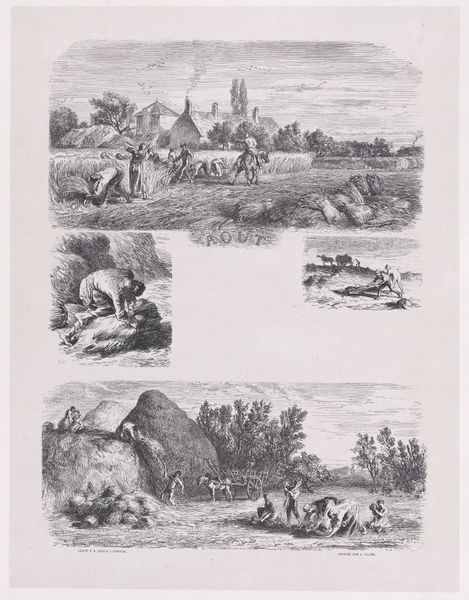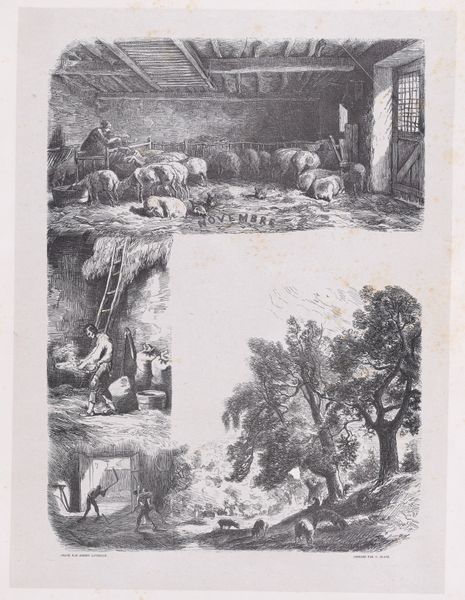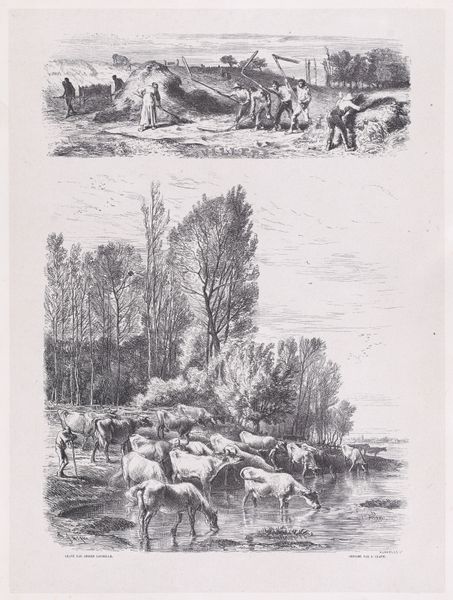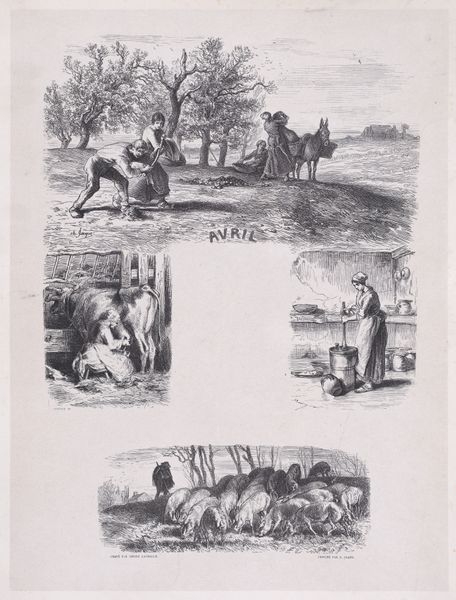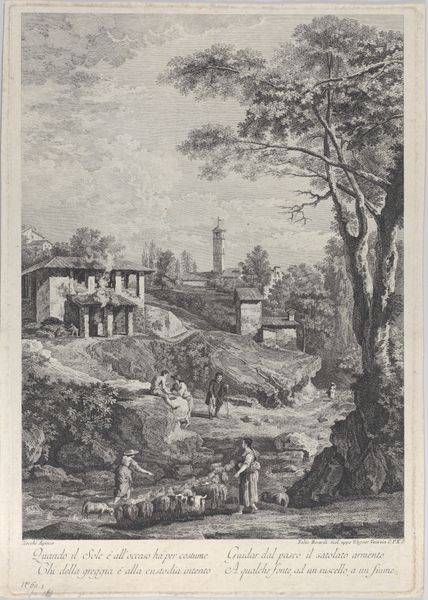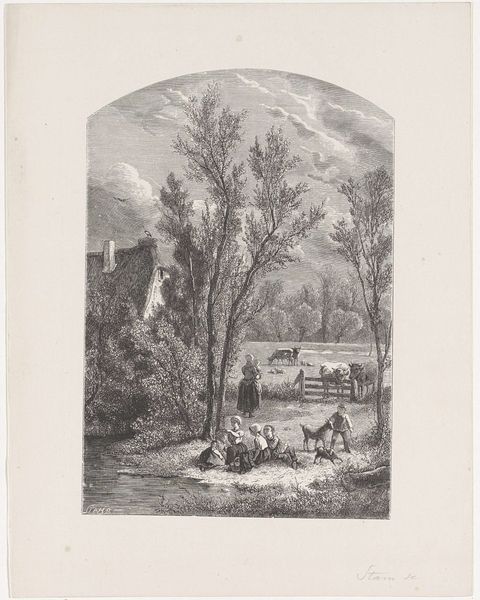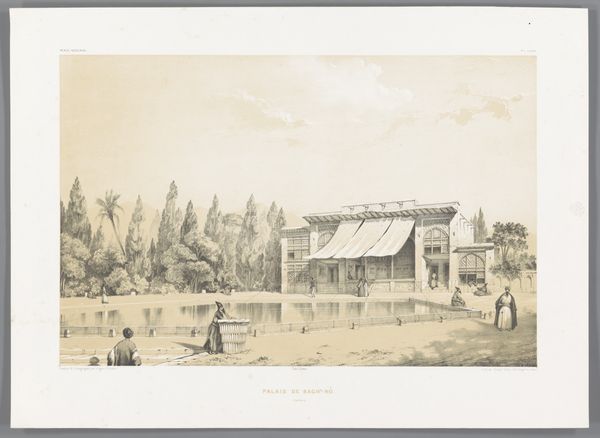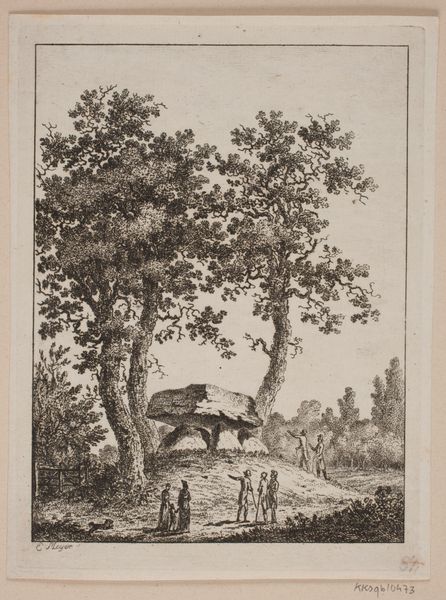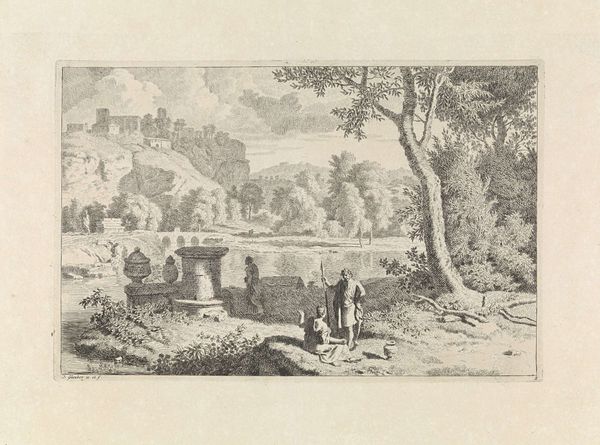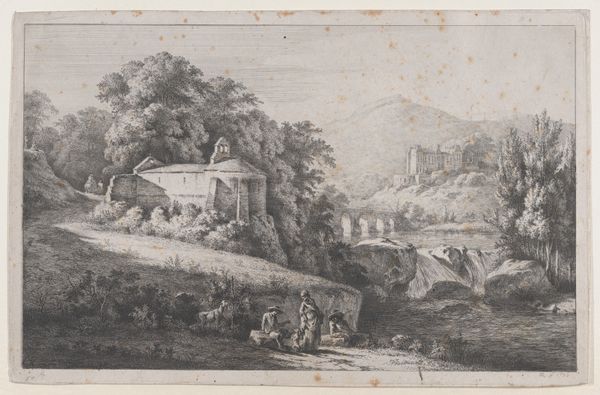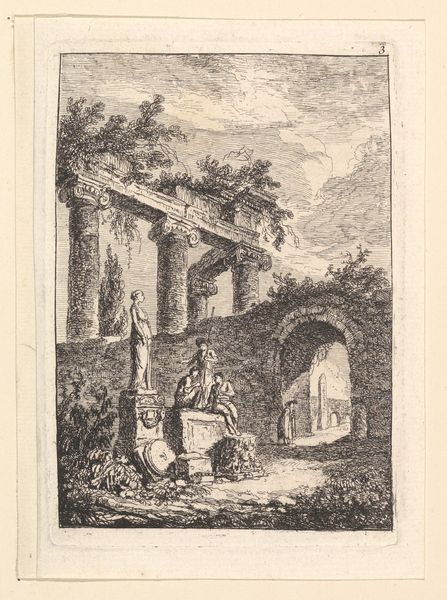
Dimensions: Sheet: 18 11/16 × 13 3/4 in. (47.5 × 35 cm) Image: 14 3/16 × 10 5/8 in. (36 × 27 cm)
Copyright: Public Domain
Curator: Ah, what a pastoral scene! The artwork before us, entitled "June, from 'Album of Rustic Subjects'," was etched by Charles Jacque in 1859. Editor: It does evoke a certain rustic charm. The sharp contrast and tightly packed compositions almost give it the feel of a woodblock print, but more… restless. What do you see in terms of structure? Curator: Note how Jacque masterfully segments three distinct vignettes across the composition. Each zone explores aspects of rural life in June, building a narrative that examines agricultural labor and country existence through light and shadow. Consider the linear marks and texture—they direct the eye and convey volume, creating visual hierarchies that add symbolic value to labor. Editor: It’s true that labor is highlighted in these renderings. The framing of peasants as essential figures within idyllic countryside landscapes reminds us of art's role in shaping cultural narratives about labor and land. What would an average French citizen have felt observing Jacque's artwork in mid-19th century? Did it provide a realistic look at the agricultural activity? Curator: Undoubtedly. Jacque has very meticulously constructed the scenes. I see, perhaps, through these well placed subjects in the fields, a focus on realism, an idealization of labor rooted in social commentary rather than just pure Romantic sentiment. Editor: Romantic indeed! I notice also a distinct sense of quiet dignity imbued into the pastoral setting. Did such representations play any role in shaping policies related to land use, labor laws, or cultural values back then? Curator: The socio-political influences cannot be overlooked, nor can its value be denied. But Jacque's choices related to line work and the relationship of objects on the pictorial plane provide another critical level of visual information. In essence, its visual structure determines much of the historical and cultural effect. Editor: It is striking how Jacque utilizes these components to not only document the pastoral lives, but perhaps also to legitimize a particular vision of the rural populace. An idea further reinforced through how such art pieces would’ve been curated and presented in Parisian galleries or exhibitions during the period, where social perception was easily shaped. Curator: Indeed. The dialogue between form and content, representation and interpretation—it makes experiencing artwork a rich process. Editor: Definitely, seeing art within its specific historical context, and as part of broader socio-political developments, definitely encourages the public to appreciate historical artwork critically.
Comments
No comments
Be the first to comment and join the conversation on the ultimate creative platform.
